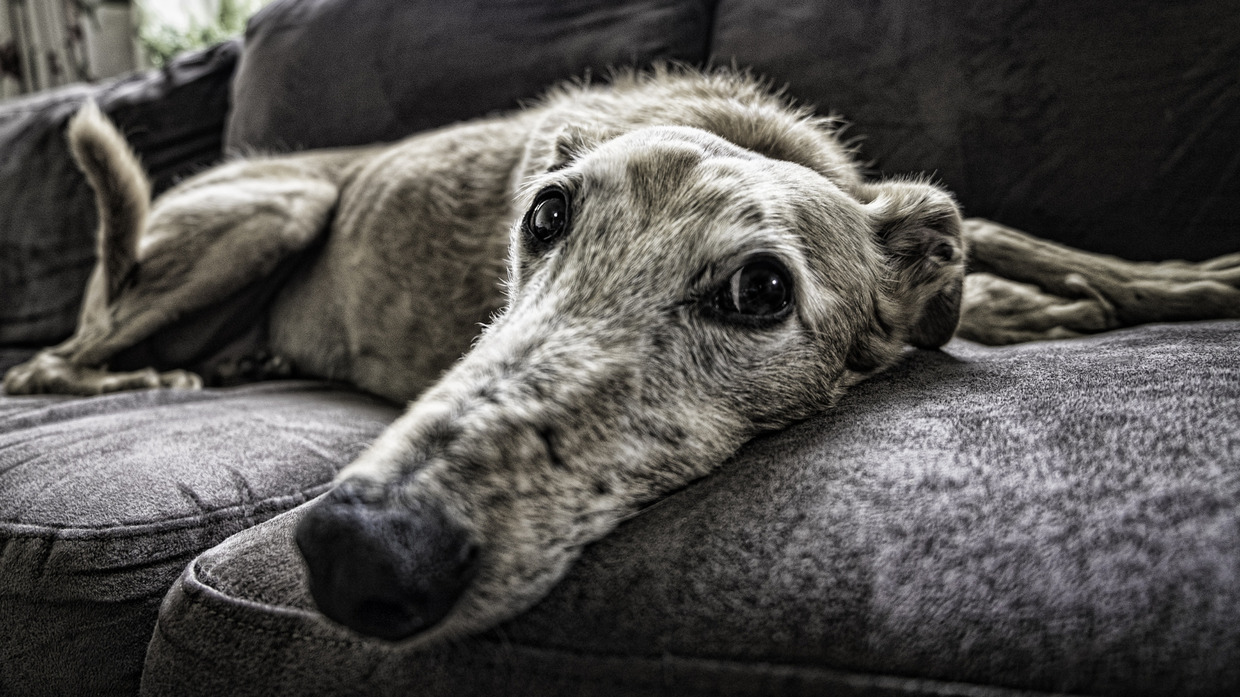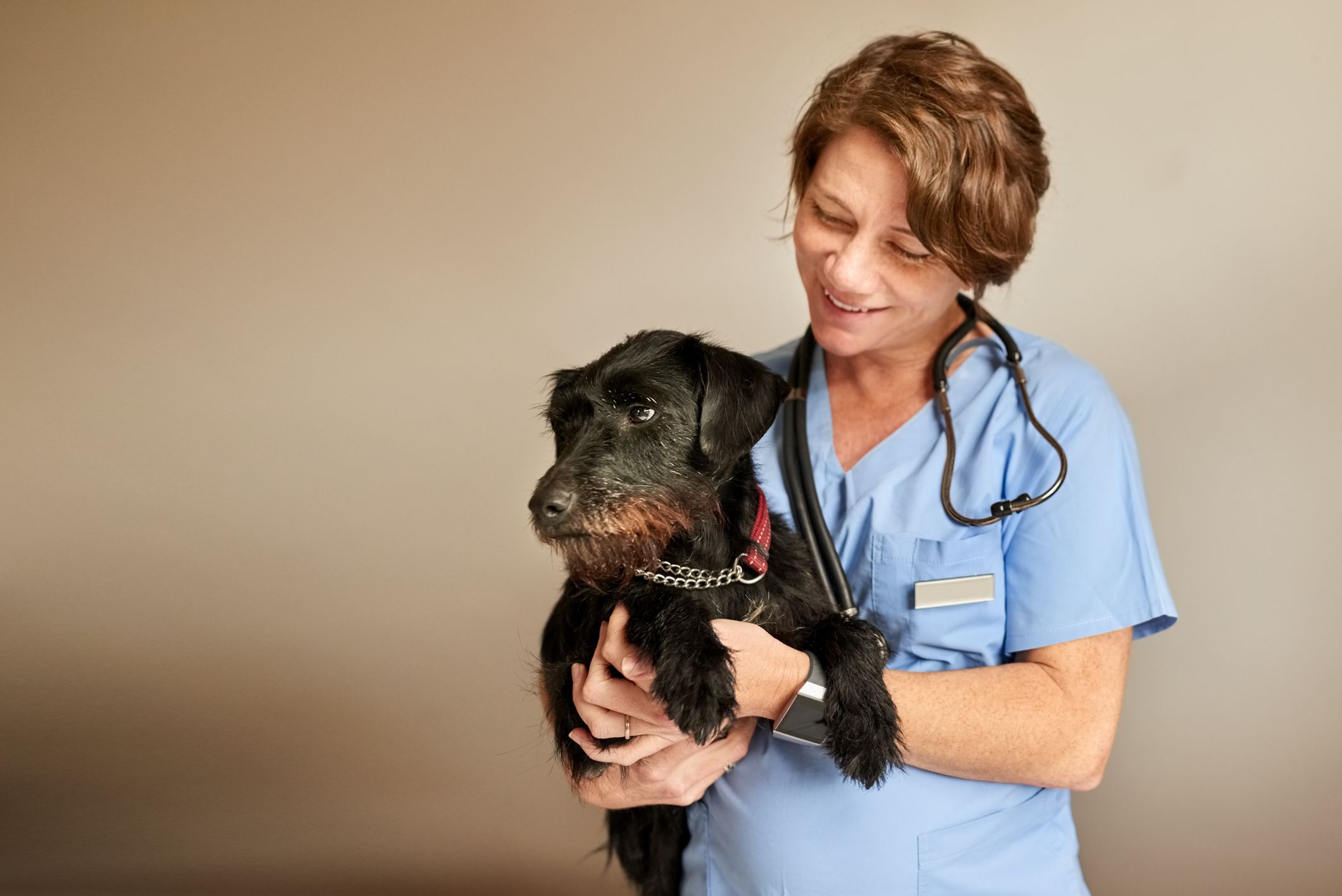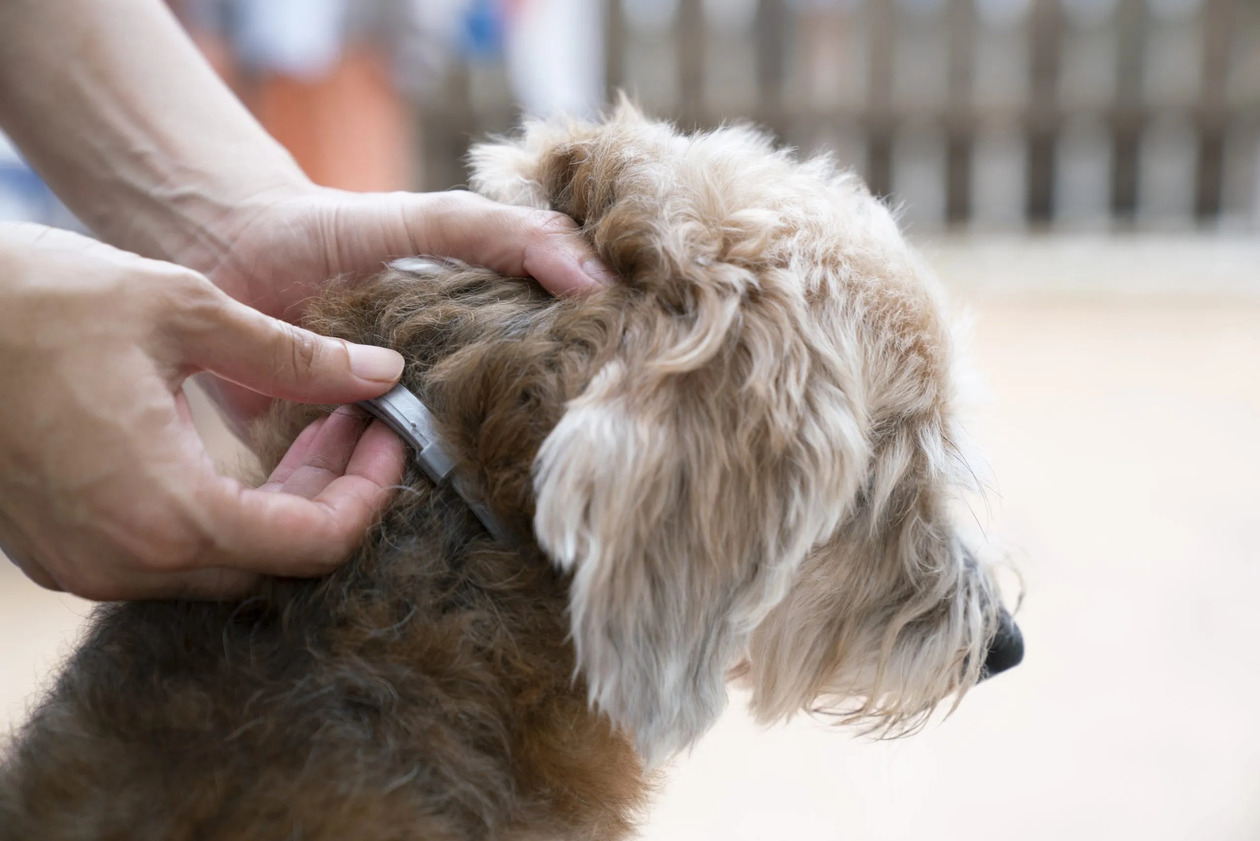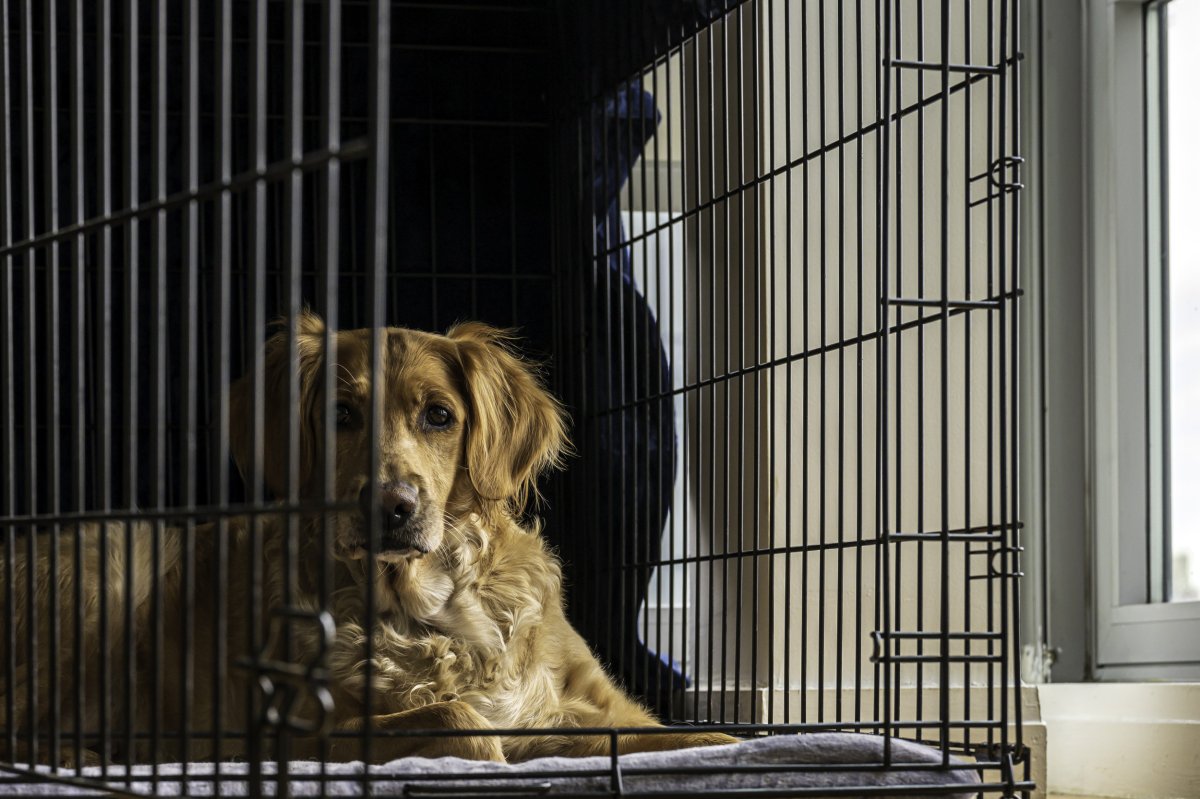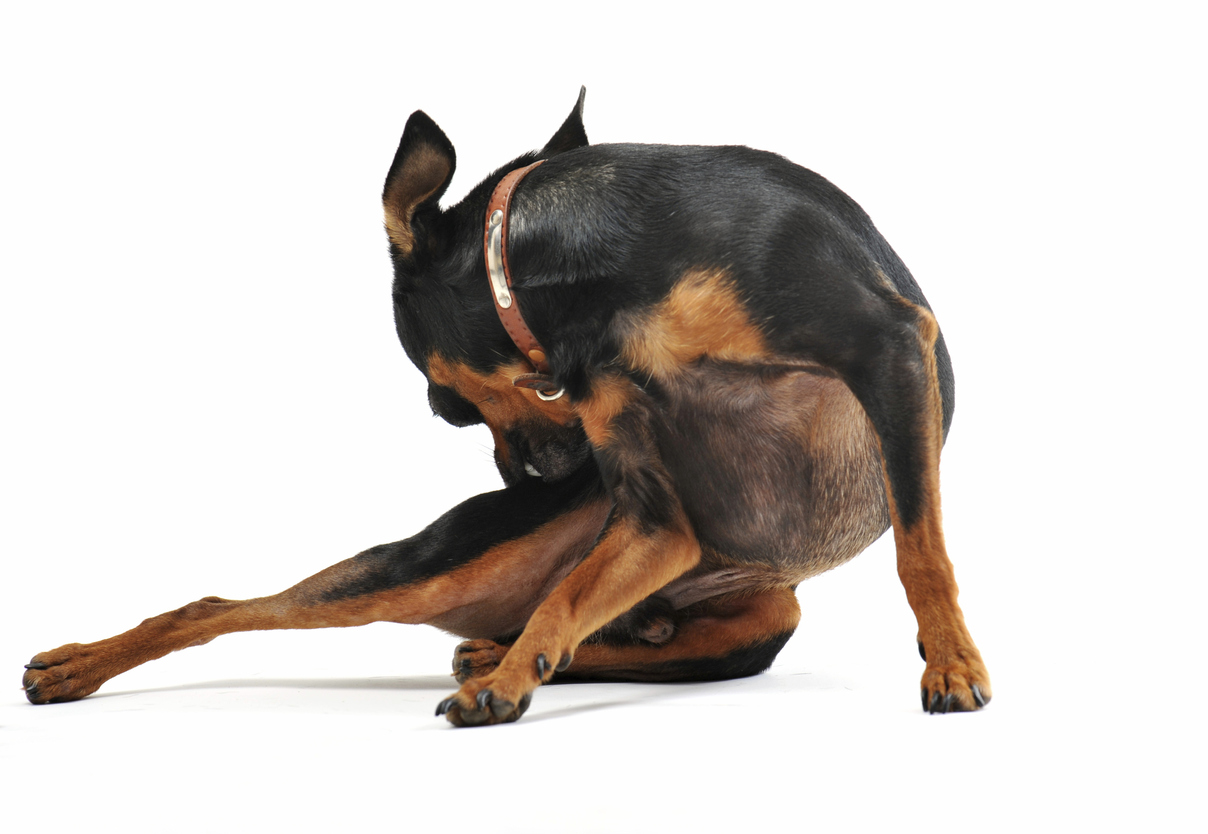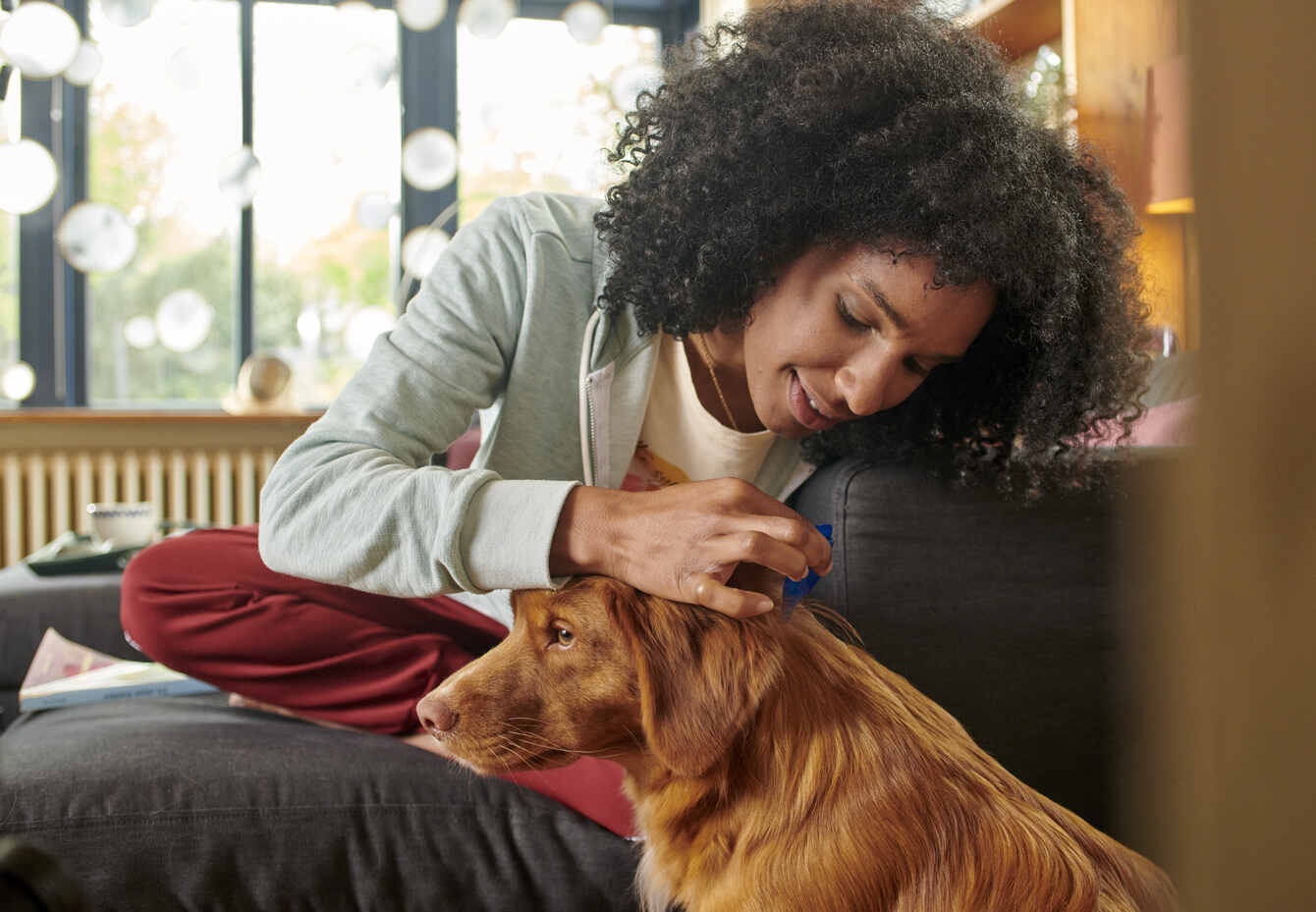Home>Health & Wellness>Common Health Issues>How Long Do Fleas Live Off Of A Dog


Common Health Issues
How Long Do Fleas Live Off Of A Dog
Published: February 14, 2024
Learn about common health issues related to fleas and how long they can live off of a dog. Find out the impact and solutions for flea infestations.
(Many of the links in this article redirect to a specific reviewed product. Your purchase of these products through affiliate links helps to generate commission for Pawsomeoldies.com, at no extra cost. Learn more)
Table of Contents
Introduction
Fleas are tiny, wingless parasites that can cause significant discomfort for dogs and their owners. These pesky insects are not only a nuisance but can also pose health risks to our furry companions. Understanding the life cycle of fleas and how long they can survive off a dog is crucial for effective flea control and prevention.
Fleas are more than just a minor annoyance; they can lead to serious health issues for dogs, such as flea allergy dermatitis, anemia, and the transmission of tapeworms. As pet owners, it's essential to be proactive in preventing and managing flea infestations to ensure the well-being of our beloved pets.
In this article, we will delve into the life cycle of fleas, explore how long these pests can survive off a dog, discuss the factors that influence their survival, and provide practical tips for preventing fleas from taking up residence on your furry friend. By gaining a deeper understanding of these aspects, you'll be better equipped to protect your dog from the discomfort and potential health risks associated with fleas.
Understanding the behavior and survival capabilities of fleas is the first step in effectively combating these persistent parasites. Let's embark on a journey to uncover the secrets of flea survival and learn how to keep our canine companions free from these troublesome pests.
Read more: How Long Can A Dog Live With Skin Cancer
The Life Cycle of Fleas
Fleas undergo a complete metamorphosis, progressing through four distinct stages: egg, larva, pupa, and adult. Understanding this life cycle is crucial for effective flea control and prevention.
1. Egg Stage:
The life cycle begins when an adult female flea lays eggs on the host animal, which can be a dog in this case. These tiny, white eggs are not sticky and often fall off the dog, landing in the surrounding environment, such as carpets, bedding, and outdoor areas frequented by the pet. A single female flea can lay hundreds of eggs during her lifespan, contributing to the rapid spread of infestations.
2. Larval Stage:
Once the eggs hatch, they give rise to larvae. These worm-like, legless creatures are photophobic, meaning they avoid light and prefer dark, humid environments. Consequently, they tend to seek shelter in cracks, crevices, and organic debris, where they feed on organic matter and flea feces. The larval stage lasts for about 5-18 days, depending on environmental conditions.
3. Pupal Stage:
The larvae then spin cocoons and enter the pupal stage, where they undergo metamorphosis into adult fleas. The pupae are encased in a sticky, protective silk-like cocoon, making them resilient and challenging to eliminate. Under favorable conditions, such as warmth and humidity, pupae can emerge as adult fleas in as little as 5-10 days. However, they can remain dormant within their cocoons for several months, waiting for the right environmental cues to emerge.
Read more: How Long Does A Dog Live With Cancer
4. Adult Stage:
Once the adult flea emerges from the cocoon, it seeks a host, such as a dog, to feed on. Fleas require a blood meal to reproduce, and they can begin laying eggs within 24-48 hours of their first meal. Adult fleas can live on a dog for several weeks, during which time they continue to reproduce and perpetuate the infestation cycle.
Understanding the intricacies of the flea life cycle is essential for implementing comprehensive flea control measures. By targeting each stage of the life cycle, pet owners can effectively disrupt the reproductive process and reduce flea populations in both the pet's environment and on the animal itself.
How Long Fleas Can Live Off of a Dog
Once fleas find their way onto a dog, they can survive for varying durations, depending on several factors. Adult fleas have a remarkable ability to adapt to different environments and can live on a dog for up to several weeks. During this time, they feed on the dog's blood, which is essential for their reproduction and survival.
The lifespan of fleas off of a dog is influenced by environmental conditions, such as temperature, humidity, and the availability of hosts. In optimal conditions, adult fleas can live on a dog for two to three months, continuously laying eggs and perpetuating the infestation cycle. However, if the environmental conditions are unfavorable, such as extreme cold or dryness, the lifespan of fleas on a dog may be significantly shorter.
It's important to note that while adult fleas primarily reside on the host animal, their eggs, larvae, and pupae are often dispersed in the surrounding environment. These developmental stages contribute to the overall flea population and infestation. Therefore, even if adult fleas are removed from the dog, the eggs and pupae in the environment can give rise to new fleas, perpetuating the infestation cycle.
Additionally, the presence of multiple hosts, such as other pets or wildlife, can impact the longevity of fleas on a dog. If there are alternative hosts available, fleas may move between animals, extending their survival and reproductive capabilities.
Understanding the potential duration of flea infestations on dogs underscores the importance of proactive flea control measures. By implementing regular flea prevention strategies and maintaining a clean and treated environment, pet owners can effectively minimize the risk of prolonged flea infestations and protect their furry companions from discomfort and health issues associated with fleas.
Factors Affecting Flea Survival
Several factors play a crucial role in determining the survival and longevity of fleas, both on a dog and within the surrounding environment. Understanding these factors is essential for implementing effective flea control strategies and minimizing the risk of infestations.
-
Environmental Conditions: The environmental factors, such as temperature and humidity, significantly impact flea survival. Fleas thrive in warm and humid environments, with optimal conditions accelerating their life cycle and reproductive capabilities. Conversely, extreme cold or dryness can hinder flea survival, potentially reducing their lifespan on a dog.
-
Host Availability: The presence of suitable hosts, including dogs, cats, and wildlife, directly influences flea survival. If multiple hosts are accessible, fleas can move between animals, extending their lifespan and perpetuating infestations. Additionally, the availability of hosts impacts flea reproduction, as adult fleas require blood meals to lay eggs and sustain their populations.
-
Flea Prevention Measures: The proactive implementation of flea prevention measures significantly affects flea survival. Regular use of flea control products, such as topical treatments, oral medications, and flea collars, can effectively repel and eliminate fleas from dogs, reducing their longevity on the animal. Furthermore, treating the pet's environment, including indoor and outdoor areas, with flea control products can disrupt the flea life cycle and minimize infestation risks.
-
Grooming and Hygiene Practices: Regular grooming and hygiene practices for dogs can impact flea survival. Bathing dogs with flea-repellent shampoos and regularly brushing their coats can help remove adult fleas and disrupt their life cycle. Additionally, maintaining a clean and well-sanitized living environment for pets can reduce the presence of flea developmental stages, such as eggs and larvae, further limiting flea survival.
-
Resistance to Flea Control Products: The development of resistance to certain flea control products can influence flea survival. In some cases, fleas may become less susceptible to commonly used treatments, reducing their effectiveness in controlling infestations. It is essential for pet owners to stay informed about emerging flea control products and strategies to combat potential resistance issues.
By considering these factors and implementing comprehensive flea control measures, pet owners can effectively minimize the survival and longevity of fleas on their dogs, creating a healthier and more comfortable environment for their beloved pets.
Preventing Fleas from Living on Your Dog
Preventing fleas from taking up residence on your dog is a proactive and essential aspect of responsible pet ownership. By implementing effective flea prevention strategies, pet owners can safeguard their furry companions from the discomfort and health risks associated with flea infestations. Here are some practical and proven methods to prevent fleas from living on your dog:
-
Regular Use of Flea Control Products: Utilizing veterinarian-recommended flea control products is a cornerstone of preventing fleas from infesting your dog. These products include topical treatments, oral medications, flea collars, and shampoos specifically formulated to repel and eliminate fleas. It's crucial to follow the recommended application guidelines and maintain a consistent schedule for administering flea control products to ensure maximum effectiveness.
-
Environmental Treatments: Treating the indoor and outdoor environments where your dog spends time is vital for comprehensive flea prevention. Vacuuming carpets, washing bedding, and using flea control products designed for home and yard applications can help eliminate flea eggs, larvae, and pupae, disrupting their life cycle and reducing infestation risks.
-
Regular Grooming and Hygiene Practices: Regular grooming and hygiene practices for your dog can aid in preventing fleas from establishing a presence. Bathing your dog with flea-repellent shampoos and using a flea comb during grooming sessions can help remove adult fleas and detect early signs of infestation. Additionally, maintaining a clean living environment for your pet, including regular cleaning of pet bedding and living areas, can minimize flea habitat and reduce infestation risks.
-
Limiting Exposure to Flea-Prone Areas: Avoiding or minimizing your dog's exposure to known flea-prone areas, such as tall grass, wooded areas, and environments frequented by wildlife, can help reduce the risk of flea infestations. When engaging in outdoor activities, consider using flea and tick preventive measures and inspect your dog for fleas after outdoor excursions.
-
Regular Veterinary Check-ups: Schedule regular veterinary check-ups for your dog to monitor their overall health and discuss flea prevention strategies with your veterinarian. Veterinarians can provide personalized recommendations for flea control products and offer guidance on maintaining a flea-free environment for your pet.
By incorporating these preventive measures into your pet care routine, you can effectively minimize the risk of fleas living on your dog, ensuring a healthier and more comfortable life for your beloved canine companion. Consistency and diligence in flea prevention efforts are key to protecting your dog from the persistent nuisance of fleas and the potential health issues they can cause.
Read more: How Long Will A Dog Live With Heartworm?
Conclusion
In conclusion, understanding the life cycle of fleas and their potential duration of survival off of a dog is paramount for effective flea control and prevention. Fleas, with their remarkable adaptability and reproductive capabilities, can pose significant challenges for pet owners, leading to discomfort and health risks for their beloved dogs. By comprehending the factors influencing flea survival, pet owners can implement proactive measures to minimize the risk of infestations and create a healthier environment for their pets.
The intricate life cycle of fleas, encompassing the egg, larva, pupa, and adult stages, underscores the importance of targeting each phase to disrupt the reproductive process. By addressing both the fleas on the dog and their developmental stages in the environment, pet owners can effectively mitigate infestation risks and protect their furry companions from the persistent nuisance of fleas.
Factors such as environmental conditions, host availability, flea prevention measures, grooming practices, and resistance to flea control products play pivotal roles in influencing flea survival. By considering these factors and implementing comprehensive flea prevention strategies, pet owners can significantly reduce the longevity of fleas on their dogs and minimize the risk of infestations.
Proactive flea prevention measures, including the regular use of veterinarian-recommended flea control products, environmental treatments, grooming and hygiene practices, and limiting exposure to flea-prone areas, are essential components of responsible pet ownership. By integrating these strategies into their pet care routines, pet owners can create a healthier and more comfortable living environment for their dogs, free from the persistent threat of fleas.
In essence, by gaining a deeper understanding of flea behavior and survival capabilities, pet owners can take proactive steps to protect their dogs from the discomfort and potential health risks associated with fleas. Consistency, diligence, and a proactive approach to flea prevention are key in ensuring the well-being and happiness of our canine companions. With the knowledge and tools to combat flea infestations, pet owners can create a safe and flea-free environment for their beloved pets, fostering a harmonious and joyful bond between humans and their furry friends.


